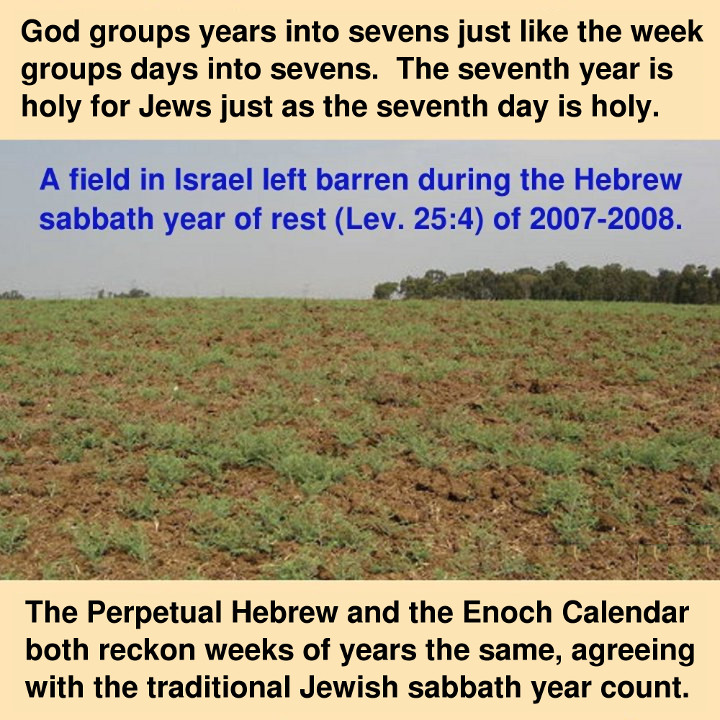
by John P. Pratt
22 Sep 2018, Atonement (PH, J), Autumn Equinox (E), TRUMPETS (UH), Summer Solstice (UE)
©2018 by John P. Pratt. All rights Reserved.
| 1. Weeks of Years |
| 2. Great Years |
| 2.1 Uniform Enoch (UE) |
| 2.2 Uniform Hebrew (UH) |
| 2.3 Enoch (E) |
| 2.4 Perpetual Hebrew (PH) |
| 3. Old Testament |
| 3.1 Adam & Eve |
| 3.2 Noah & Abraham |
| 3.3 Jacob & Joseph |
| 3.4 Moses, Joshua & David |
| 3.5 Fall of Israel & Judah |
| 4. New Testament |
| 5. Latter Days |
| 5.1 Joseph the Seer |
| 5.2 David the Servant |
| 5.2.1 Scriptural Criteria |
| 5.2.2 Excellent Candidate |
| 5.2.3 Holy Year Witness |
| 6. Conclusion |
| Notes |
The Lord sometimes counts years in the same manner as days (Num. 14:34, Ezek. 4:6), which is referred to in my work as the "Day-Year Pattern". That concept is also expanded into grouping years by sevens and naming them the same as weekdays. Moreover, sets of years are also grouped into the same patterns as entire years. Such sets of about 365 years (depending on the calendar) are called "Great Years".[1] For example, one year on the Enoch calendar has 364 days and an Enoch Great Year comprises 364 years, with the years named exactly as are the days of one Enoch year. This results in "holy years" just as there are "holy days".
 |
Section 1 discusses how the weeks of seven years are reckoned and named. Those wishing to skip the technical parts of the article might just note in Table 1 that names are proposed for each of the seven years, which are only numbered on the traditional Hebrew Calendar. Section 2 correlates each of the four calendars with the Gregorian and can be skipped by simply looking at the results which are summarized in Table 2. It is the other sections which contain the interesting results.
The law of Moses mandated counting years by sevens and keeping the seventh year as a holy year. This procedure was to begin when the Israelites entered the Promised Land after having been led by Moses for forty years in the wilderness (Lev. 25:2-4). Although at first the Hebrews failed to continue that practice of grouping years by sevens, called "weeks" of years, after they returned from the Babylonian exile in 538 BC they have been very faithful ever since keeping that count. All of my research indicates that they have done so correctly. For example, some orthodox Jews let their land lay fallow from Sep 2007 to Sep 2008 as commanded in the law of Moses (See Figure 1).
The sacred calendars which are based on the week all name the seven years in a week of years the same as they name the days of the week. The traditional Hebrew Calendar simply numbers the years from "first" to "seventh", usually calling the seventh year the "Sabbath". In my work, two such calendars (Jubilee and Priest) already have names for each weekday, but the Perpetual Hebrew and Enoch calendars have not had weekday names. The Gregorian names Sunday, Monday, etc. have been used until now, but that can be confusing because those days begin at midnight rather than at 6 pm and those names are mostly derived from pagan gods.
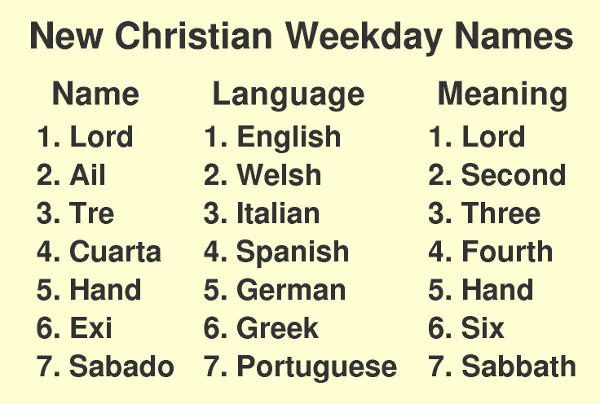 |
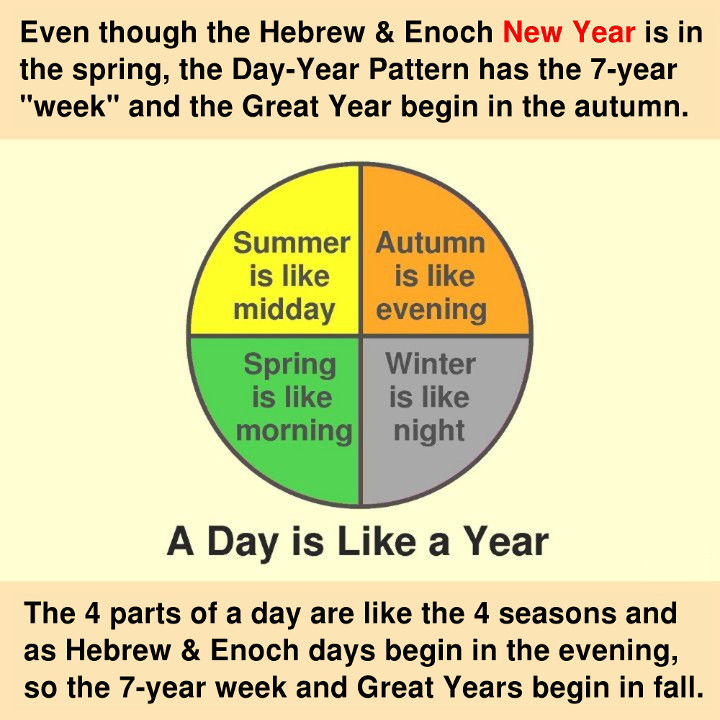 |
The concept of the Great Year is simple and yet the implications result in incredibly powerful and compelling witnesses of scripture and prophets. Let us look at each of four calendars beginning with the simplest.
The Uniform Enoch Calendar (UE) is very simple in design, which is what makes its witness so powerful. As shown in Figure 3, every year has 364 days divided into quarters of exactly 13 weeks each. Every year and in fact every quarter begins on a Sunday, which, using the new names, is the day Lord. When the new names are used it should be remembered that the previous evening is included.
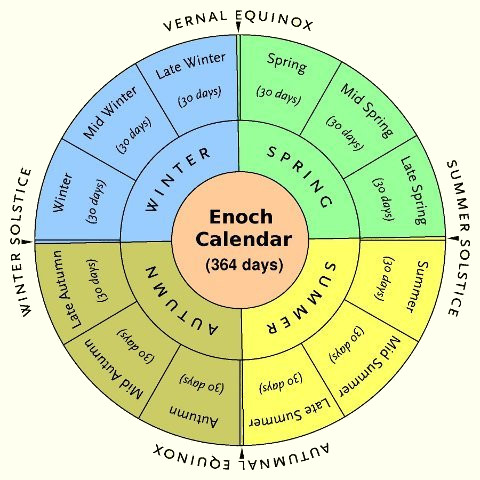 |
Because no leap days are ever inserted into this uniform version, this 364-day calendar does not follow the seasons of the 365.242-day year. It is important to understand that such is not its purpose, but rather that is the purpose of the Enoch Calendar. There are two main uses of the Uniform Enoch Calendar. First, it provides a way to celebrate holy days that usually are connected with a certain season, such as Passover in the spring, at any time of the year. For example, if someone is being delivered out of bondage like the Israelites were at the Passover Exodus, but it happens in winter, then it could occur on Passover (UE).
The second power of the UE Calendar is that once that one day in all of history is known or fixed, then every other day in history is determined.
All that was just said is also true of the Great Year (UE). It has these features: (1) it always comprises 364 years, (2) every season begin in a year LORD, and (3) once one year is determined, then every other year in history is determined. In the case of the Enoch and Perpetual Hebrew Calendars, the weeks of years are already known from the traditional Hebrew Calendar. But the UE years are of a different length (364 days, not 365.242 days average), so fixing one year on the UE calendar will determine weeks of years for the Uniform Hebrew Calendar also because it also averages exactly 364 days. In other words, a year named SABADO (UE) will also be SABADO (UH) because both years average exactly 364 days.
With all of that in mind, all that remains to determine all Great Years (UE) in history is to identify one of its years on the Gregorian Calendar. This article is the first to identify the correct year to determine all Great Years. That year is by most standards the most important year in history. That year is the Uniform Enoch Year in which the resurrection of Jesus Christ occurred. It is the year called EASTER, being also called the year LOR 15 SPRING (note the use of LOR as the abbreviation for LORD, which corresponds to SUNDAY). Thus, that determines both the weeks of years and also all of the Great Years.[3] Evidence that this correlation to the Gregorian Calendar is correct is provided in the later sections by how many key religious events result from this chief cornerstone year.
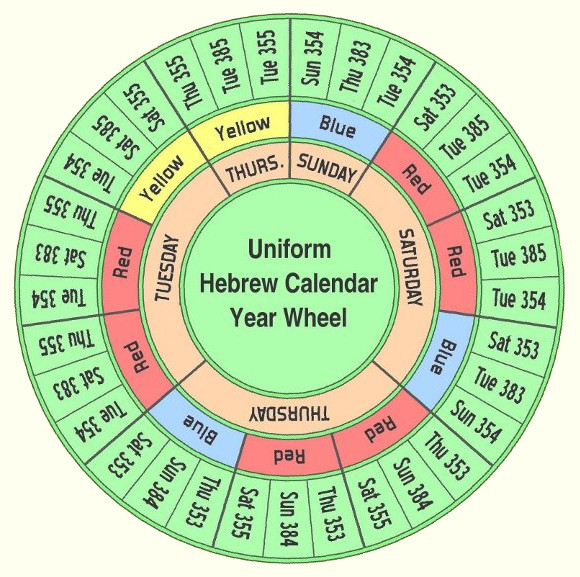 |
The UH Calendar is perpetually tied to the UE Calendar in the following way. The regular Hebrew and Perpetual Hebrew calendars are tied to the seasonal year by having Passover (the 15th day of the first month Nisan) never fall before the spring equinox (first day spring on 20-21 March) (see Figure 5). Is there any way the UH Calendar can do something similar? Yes, it can and does! It turns out that the UH Calendar Year Wheel has an average year length of exactly 364 days! That means every 33 years the UH and UE calendar start over in an indefinitely repeating cycle. That means that even though the UH calendar years jump around between 353 and 385 days long, it can consider the UE Spring Equinox holy day to be the day on which the UH Passover cannot precede! That means that even though both calendars rotate though all of the seasons, at least they do so linked together so that UH Passover always occurs in UE Spring!
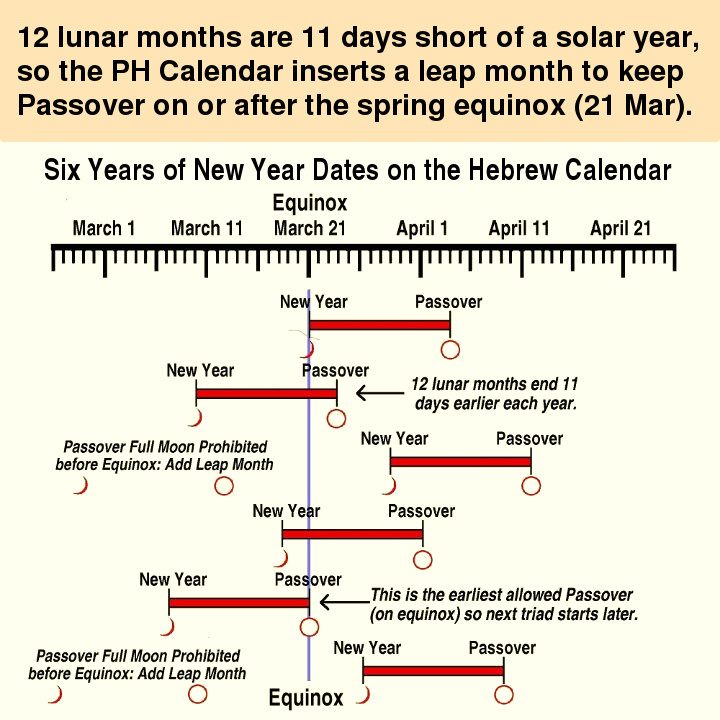 |
There are eleven choices on how to align UH years with UE years which all have the year of the Resurrection be on EASTER (UH), which is an excellent place to start given that their SEASONS will necessarily be synchronized. Of those eleven, there is only one choice which has a compelling argument to be correct.
The date of the Beginning of Mortality proposed in my work is on Passover 4001 BC (PH), exactly 4,000 Hebrew years before the birth of Jesus Christ on Passover 1 BC (PH). That seems amazing enough, but could something similar occur on the UH Calendar? Here it should be noted that a UH year is shorter than a seasonal year because it only has 364 days. It turns out there are about 4,014 UH years between Mortality and Christ, not 4,000. Remember that the Atonement of Christ has everything to do with the Fall of Adam and Eve, so we should not be surprised if not only the days but also the years of each are highlighted in history.
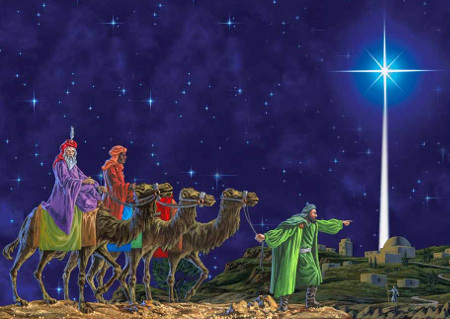 |
The choice of alignment for Great Years on the Enoch Calendar (E) was made years ago and appears to be correct.[6] Enoch and PH years are the same overall average length as our regular solar years. The cycle of the seven year weeks ending in the Hebrew sabbath years have been accurately kept so that does not need to be determined.
As with the uniform version, all that is needed to determine Enoch Great Years is to identify one year and then all of the rest can be known by simply counting sets of 364 years. Early in this work it was discovered that the year in which Jesus Christ was born was the first year of an Enoch Great Year, being NEW YEAR (LOR 1 SPRING, E). All subsequent discoveries have verified the correctness of that identification.
The Great Years on the Perpetual Hebrew Calendar have been the most difficult to identify and to know exactly how to calculate. Unlike the other three calendars, this one is far more complicated. The basic idea was discovered back in 1990, which is that the same Perpetual Hebrew Calendar Year Wheel is used for Great Years as is used for regular years. But unlike the UH Year Wheel, one does not simply count around the wheel continuously for regular years. If that were done, then the years would average 364 days in length. Instead, the usual case is that one counts for 11 years and then jumps to a new starting place and counts another 8 years, which brings the average up to 365.242 days as needed.
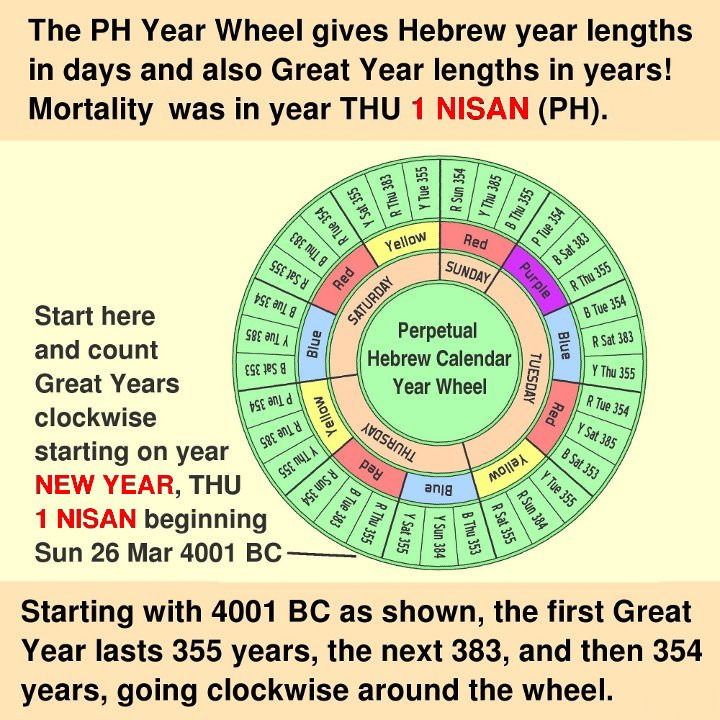 |
Since 1990 the basic pattern has been known for the first 11 Great Years of history from Mortality until Christ. Certain preliminary results were published[7] but the exact starting place on the wheel was not known, nor what to do for the last 8 Great Years of history. That is, does one skip to a new starting place for those years or not?
Any link to the Enoch Calendar was not suspected until recently when the UE-UH Great Year pattern was discovered. Until then, they appeared to be two separate calendars. The clue that the Enoch and PH Great Years should be linked together in a similar manner to the UE and UH greatly simplified the question. Going around the PH wheel continuously would average 364-day years, so it would only stay synchronous with the Enoch calendar if no jumps were made! Thus, it is now clear not to jump, so we are back to simply picking one starting point on the PH Year Wheel and then all other years in history are determined by counting around the circumference of the PH Year Wheel.
The correct choice is that the year of Mortality was the first year of a Great Year and was NEW YEAR (HAN 1 NISAN), as shown in Figure 7. Remember that the day of the week of years, HAN (THURSDAY), is already determined by the traditional Hebrew Calendar sabbath year cycle.
With the Great Years of all four calendars now correlated to the Gregorian Calendar as summarized in Table 2, let us now turn to the application of these Great Years to the dates of sacred events already proposed in my articles over the last three decades. When dates are given for events of religious history, they can be found in my Religious Chronology which includes links to the sections of my articles where those dates were derived, so footnotes to those articles are not provided here.
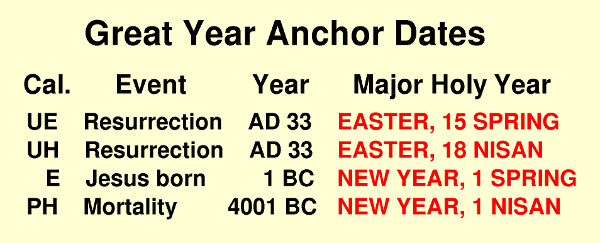 |
In preparation of this article a search was made for an Enoch holy year in that time frame and immediately an ideal marriage date for them was found. The day of Easter Sun 9 Apr 4006 BC was Easter (Lor 18 Nisan, PH), Easter (Lor 15 Spring) SPRING EQUINOX (SAB 0 SPRING, E), 1 Chief (Priest), and 7 Flower (SR). In particular, that was a major holy day in a major holy year on the Enoch Calendar. Adam first breathed on 1 Chief (P) and his Fall was on 1 Chief (P), so the marriage date fits in with that pattern. Moreover, the Beginning of Mortality, when they left the garden, was also on Easter Lord (E) five years later, so that is a match. Therefore, it is here proposed to be their marriage date.
There is another new date to add to the list. In former articles the dates of the Fall of Eve, the day she presents the fruit to Adam, and the Fall of Adam were proposed to have occurred one week apart on the three annual Decision Days (17 Tammuz, 24 Tammuz, 2 Ab, PH). It was also mentioned in my work that the result of decisions often occurred one week after the last Decision Day. That day is called Burning (9 Ab, PH).[9] The name relates to the day being commemorated as a holy fast day on the Hebrew Calendar in remembrance the burning of both the first and second temples. Most of the events on Burning are the results of bad decisions!
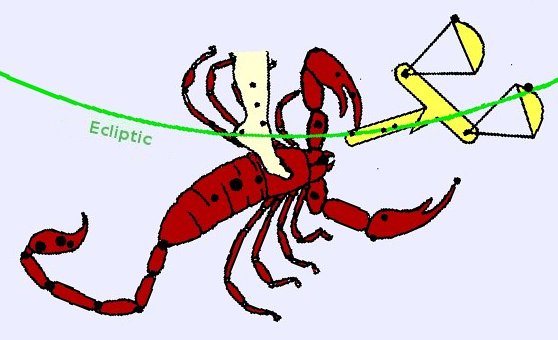 |
With that in mind, all four of these calendars had key religious events occur in a holy year while Adam and Eve were in the Garden of Eden. They were married in the SPRING EQUINOX (E), they fell and were judged in 1 LATE WINTER (UE), and Mortality began in NEW YEAR (1 NISAN, PH), the first day of a Great Year, and the FEAST OF ESTHER (SAB 15 ADAR, UH), which was 11 Great Years before the birth of Jesus Christ in the year FEAST OF ESTHER (UH).
The last day of the Great Flood, when they exited the ark, began a holy year on two calendars: it was TRUMPETS (SAB 1 TISHRI, UH) and also AUTUMN EQUINOX (SAB 1 AUTUMN, UE). Apparently the symbolism is that the destruction of the world was not in a holy year, but that the next year began a new age that should be heralded with trumpets!
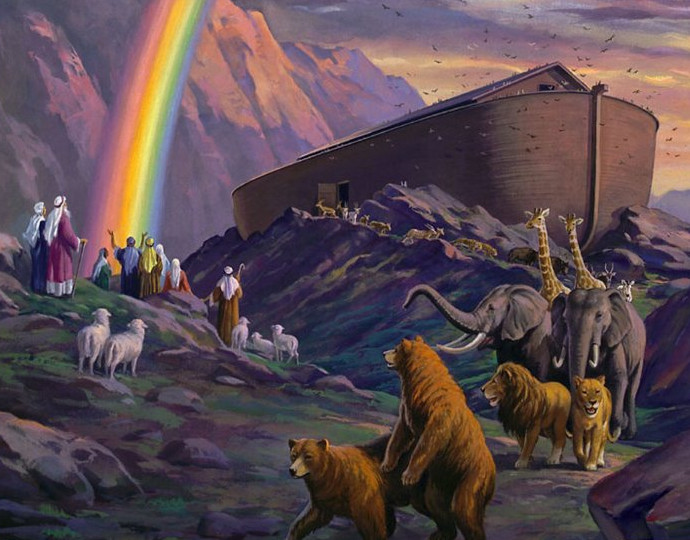 |
Abraham was born on Atonement in the holy year 1 AB (PH). "Ab" means "Father", so Father Abraham was born in the year 1 FATHER! Moreover, besides being born on seven other holy days and on the night of a double planetary conjunction, he was also born in two other holy decision years! He was born in the year 17 TAMMUZ (UE) and 24 TAMMUZ (UH)! The symbolism may well have been that Abraham would have to decide whether to follow the traditions of his father of worshipping idols or not. His choice of the true God affected many nations and in fact, all the nations of the earth (Gen. 26:4).
Remember that all of these years are determined after one year is selected as the point to reckon from, as shown in Table 2. To have three holy years all line up is rare indeed!
The day proposed long ago in my work for when Jacob had the vision of "Jacob's Ladder" was on New Year (1 Nisan, PH), Spring Equinox (E), and 1 Father (Priest). Now it turns out to be on New Year in the year NEW YEAR (PH), that is, the very first day of a Great Year! His marriage date to Leah was on Passover in the year PASSOVER (E), and to Rachel on End Passover in that same year PASSOVER (E). Their first twelve children, with Joseph being the last, were born during the next seven years, which was the holy WEEK of seven years of PASSOVER (E).
Joseph was not only born on Easter (E) the year END PASSOVER (E), but that was 14 years after Jacob's dream and beginning to work for Laban. That means it was also the year PASSOVER (15 NISAN, PH) and indeed on Easter (PH) also.
The Exodus of the children of Israel from Egypt led by Moses of course occurred on Passover (PH), as is commemorated annually by Hebrews. Now it turns out that year of the Exodus, determined by just counting years around the PH Year Wheel, was the year NEW YEAR, 1 NISAN (PH), so it was the beginning of a Great Year also. Great Years seem to begin with new eras and often even traveling to a new locations.
When Joshua, the successor to Moses, challenged Israel to "Choose ye this day whom ye will serve!", the day was a Decision Day (2 Ab, PH) and also 1 Lord (V, UV, UM) and 1 Dragon (SR), indicating the two choices! But now it turns out it was also a decision day in holy year: 1 Mid Summer 1 LATE SPRING (E), with 1 Mid Summer being the same (third) Decision Day on the Enoch Calendar. Moreover, it was also the holy year 1 IYAR (UH), so it was a double holy year.
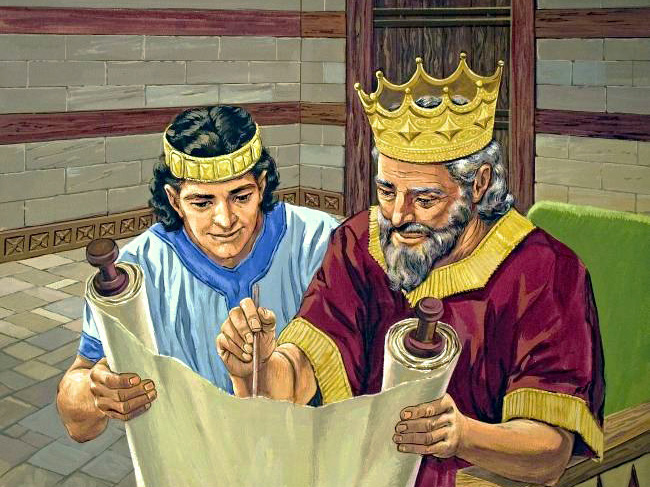 |
Similarly, when the lost ten tribes were taken into captivity in 723 BC, that also was NEW YEAR (SAB 1 NISAN, PH), the starting of the second Great Year after the Exodus. That follows the pattern that NEW YEAR (PH) begins a new age for Israel. Thus, the Exodus began a Great Year beginning a new life out of the Egyptian captivity, Then David began the next Great Year, when Israel became the strongest world power at the time. Then Assyria took over and captured the Northern Kingdom of Israel, which certainly began a new age for them, as they have been "lost" ever since.
Moreover, it turns out, by simply counting years, that 723 BC was also NEW YEAR (SAB 1 NISAN, UH), so it also began a Great Year on the UH Calendar! Remember that the PH and UH years are different lengths, so most of the time the two calendars are not even on the DAY of the week of years. Now both calendars are not only both on the same DAY (i.e. year of the week of years) being SABADO, they are on the same DAY of the Great Year too!
Something especially interesting happened with the Fall of Judah, who constituted the other two tribes of Israel (Judah and half of Benjamin). There were three key dates in the prophesied 70 years of exile from Jerusalem into Babylonian captivity.
The first key date was the taking of the first captives. That happened in the summer of 605 BC after Nebuchadnezzar's Battle of Carchemesh where he defeated both Assyria and Egypt. They had been the world powers and Israel had depended on Egypt to protect them. On his way home Nebuchadnezzar stopped by Israel and took Daniel and others of the royal court into captivity for training. That occurred in the year 1 AB (PH) and also 1 AB (UH), as the two Great Years were still synchronized. That year was not only the beginning of the captivity, it was also the beginning of the Age of Babylon as the world power.
The next important date was when Jeconiah (also known as Jehoiachin), King of Judah, was taken into captivity. That was in the year 9 AB (PH) and 9 AB (UH), the year symbolizing the result of (usually bad) decisions! So that is a perfect symbolic match for what was happening!
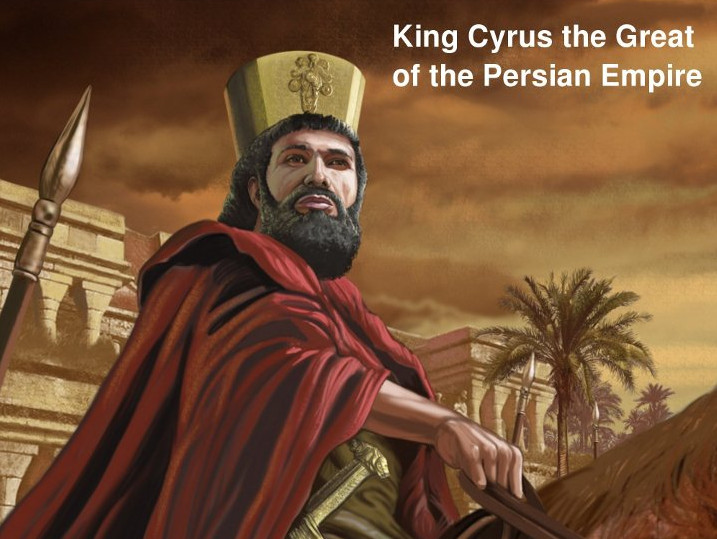 |
If you have any doubts that the Lord is actually using these holy years, just consider the chances of just these holy years lining up with so accurately with these three dates known with certainty from history!
The way the 70 years were counted is that there are 30 DAYS in AB and 29 DAYS in ELUL and 10 DAYS through 10 TISHRI. That makes 69 years. They did not get to go immediately back to Jerusalem, but when they arrived and held the Feast of Tabernacles, it was in the 70th year![10]
The New Testament story really begins with the birth of Mary in the year FEAST OF ESTHER (15 LATE WINTER, E). Luke begins his account with the appearance of the angel Gabriel to Zacharias on the Winter Equinox SPRING EQUINOX (SAB 0 SPRING, E). Gabriel also appeared to Mary on Firstfruits (PH, J), during that same holy year. Then both John the Baptist and Jesus Christ were born in the next year NEW YEAR (LORD 1 SPRING, E). Their births were also both on holy days in a holy year on the PH Calendar, being on Atonement and Passover (PH) respectively, in the year FEAST OF ESTHER (14 ADAR 2, PH). Moreover, they were both born in a Jubilee year on the Jubilee Calendar!
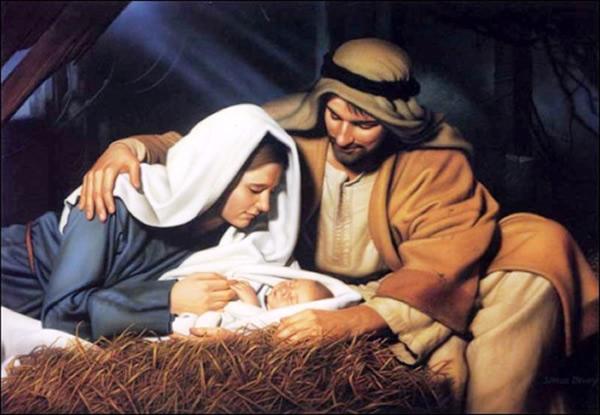 |
Remember that holy years are often reserved for times when many sacred events happen in one year. In this case, the presentation of Jesus at the temple on his fortieth day of life, the visit of the magi, and the flight to Egypt all occurred in that same quadruple holy year of his birth. Moreover, the return from Egypt in the next year was the holy FEAST OF ESTHER on three sacred calendars: FEAST OF ESTHER (15 ADAR 2, PH), FEAST OF ESTHER (15 ADAR, UH), and 14 LATE WINTER, (UE).
Thirty days after the Feast of Esther comes Passover, so thirty years after the FEAST OF ESTHER comes the holy PASSOVER year. That is when Jesus was baptized in the year he would turn 30 (Luke 3:23). His baptism was on Atonement in the year PASSOVER (15 NISAN, PH, UH). The PH and UH calendars were then synchronized to the very day! On the UE Calendar, His baptism was on Tabernacles, Sab 14 Autumn 1 MID SPRING (UE). That means it occurred in three holy years! Moreover, He began his public ministry six months later on Passover on all three of those calendars and in same three holy years!
Moving now to the penultimate year of the Savior's ministry, John the Baptist was martyred on Tabernacles, Sab 14 Autumn PASSOVER (SAB 14 SPRING, UE). That same year was the first miracle of the loaves and the fishes on Passover, Sab 14 Spring, in the year PASSOVER (SAB 14 SPRING, UE). Such a day which is the same holy day as the holy year only occurs once for that day in 364 years!
There were many sacred events that occurred in the last year of the Savior's ministry. It began with His transfiguration on Atonement (Sab 10 Tishri), EASTER (LORD 18 NISAN, UH). That day was also Autumn Equinox (Sab 0 Autumn), EASTER (LORD 15 SPRING, UE). So it was one a holy day in a holy year on two calendars. It was also on Atonement (PH) and was a holy day on several other calendars.
Later that same year was the Anointing for burial, the Triumphal Entry, the Last Supper, Crucifixion, Resurrection and Ascension of Jesus Christ. All of those events occurred in those same two holy EASTER years (UE, UH).
The last event to be mentioned here is the death of the Virgin Mary on Tabernacles, Sab 14 Autumn, 1 MID SPRING (UE). She also died on Atonement in the year ATONEMENT (J), so she died in a doubly holy year. Moreover, her death was also a holy day on nine other sacred calendars. Her death ended the Meridian of Time jubilee which began with the birth of Christ on the Jubilee Calendar.
Does God continue to use these calendars, or was everything fulfilled with Jesus Christ? There are many clues even in what we have seen so far in this article that these calendars are intended to continue throughout history. For example, the Hebrew Calendar is based on the Metonic 19-year cycle which is divided into 11 years and 8 years. We have seen that from from Mortality to Christ was exactly 11 Great Years (UH), which was about 4,000 solar years. That leaves me expecting another 8 Great Years, which would be about ¾ as long or 3,000 years. Let us now turn to see how these calendars continue to be used in these latter days.
Nearly 200 years ago a young man named Joseph Smith, Jr. (herein called Joseph the Seer), claimed to have had a vision in which he saw the Father and the Son! That is a huge claim, possibly unparalleled in history! If that indeed happened, surely it would have been scheduled on some grand calendar of God even as was the Exodus in the days of Moses.
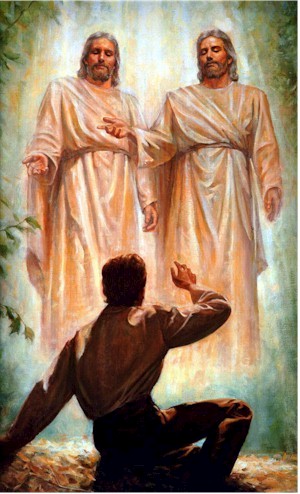 |
Then someone pointed out the Prophecy of Weeks in the Book of Enoch.[13] All of history is divided into 10 parts or "weeks". That works well with each week being two Great Years (E), or 728 years. There was a clear starting point in the year LORD 1 SPRING (E) in the year following that proposed in this article for the marriage of Adam and Eve. That beginning point had already chosen before I'd heard of the Prophecy of Weeks because it came out exactly 11 Great Years (E) until the birth of Christ.
When I continued to project the "weeks" from Adam, it turns out that the already proposed date for the First Vision was the precise beginning day of the ninth week! Again, it is an easy calculation: 8 x 728 - 4004 = 1820! So the First Vision was indeed the opening event of a 728-year age on the calendar used by Enoch to describe the history of the world as prophesied by Adam (D&C 107:56-57). Indeed the events of the ninth week match his prophecy:
"After this, in the ninth week, shall the judgment of righteousness be revealed to the whole world. Every work of the ungodly shall disappear from the whole earth; the world shall be marked for destruction; and all men shall be on the watch for the path of integrity." (Enoch 92:14-15)
Indeed righteous was revealed to the world and, because the destruction of the wicked is at our doors, let us all be on the watch for the path of integrity! Now let us see how all four of these sacred calendars work together to highlight several years of LDS Church history.
The next main event of Church history that occurs in a sacred year is the marriage of the Joseph the Seer to his wife Emma in the year FEAST OF ESTHER (15 ADAR 2, UH). Then many events happened in 1829 in the holy year CONSECRATION (10 SPRING, E): the scribe Oliver Cowdery, the 3 and 8 witnesses, priesthood restoration, and the completion of the translation of the Book of Mormon.
One sign of organization is there would be no more holy days (E) for three more years, but immediately the holy year in 1830 switches over to LAMB DAY (14 NISAN, PH). Lamb day is the day when the Passover Lamb is sacrificed on which the Savior was crucified. In that year was the publication of the Book of Mormon and the birth of the Church of Christ.
Beginning in the autumn of 1830 was PASSOVER (15 NISAN, PH) in which came the ordination of the first high priest and the founding of Zion in Independence, Missouri.
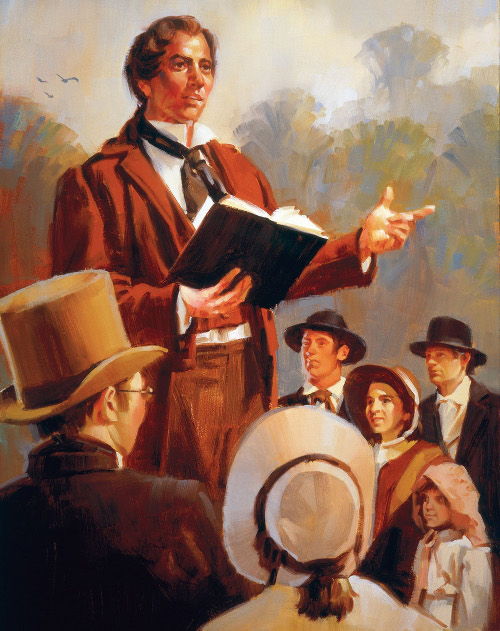 |
Then late in 1833 began the year EASTER (LORD 18 NISAN, PH) and EASTER (LORD 15 SPRING, E) during which the stars fell from the sky[14] and the first Church Patriarch, Joseph Smith, Sr., was ordained.
In 1836 the Golden Age ended in END PASSOVER (21 NISAN, PH). Remember that all of the seven years from 1830 to 1836 were during the PASSOVER week and were in a sense holy. In the law of Moses and in my work only the first and last were more holy being sacred days of rest. In 1840 Joseph Smith Sr. died in the year END PASSOVER (SAB 21 SPRING, E). Again, all of the seven years leading up to that year were part of the holy PASSOVER WEEK.
The women's Relief Society was founded in 1842 in a doubly holy year. First, it was NEW YEAR (1 NISAN, UH), meaning it began a Great Year on the UH Calendar. Secondly, it was CONSECRATION (10 SPRING, UE).
To touch on later events after the martyrdom of Joseph the Seer, the Saints were driven into the wilderness, and the first scouts entered the Salt Lake Valley on the holy day and year 9 Ab SAB 1 IYAR (PH). Moreover that was the last day of another holy year, EASTER (LORD 15 SPRING, UE). One can see a comparison of Moses leading Israel into the wilderness to start a whole new era and Brigham Young, who succeeded Joseph as President of the Church, leading those who call themselves a modern "Israel" into the wilderness to start an entirely new era of their history.
One final pair of dates to mention are beginning building the Salt Lake Temple in the year END PASSOVER (SAB 21 SPRING UE) and dedicating it forty years later in the year 1 LATE SPRING (UE) on the same sacred calendar.
Thus there are many witnesses that these four calendars were to work together like a tag team to take turns to continually highlight years during the restoration of the Church of Christ.
There are two sets of major holy days and in fact, two entire weeks of holy celebration on the Hebrew and Enoch calendars. One is the 7-day Feast of Passover in the spring and the other is the 8-day Feast of Tabernacles in the autumn. Tabernacles is actually the greater of the two feasts, with more offerings made. We have just looked in some detail at the seven years of the FEAST OF PASSOVER on four different calendars during the days of Joseph the Seer. We saw a period of much restoration and revelation in which had many entire holy years highlighted by the combined use of these four calendars.
What about the 8-year FEAST OF TABERNACLES? It should come about 182 years later, that is, about half of a Great Year of 364 years, after the 1830 to 1836 PASSOVER WEEK. That would put the beginning of TABERNACLES WEEK about 2012.[15] That means we should be in the week of TABERNACLES right now! Is anything happening now which is comparable to the restoration of the Lord's Church?
There are many prophecies about a great leader often called David the Servant who will arise in the last days. He is prophesied in scripture and Joseph the Seer spoke of him: "the throne and kingdom of David is to be taken from him and given to another by the name of David in the last days, raised up out of his lineage" (TPJS 339).
Let's see, we are still in the last days before the Second Coming of Jesus Christ, but by some calendars we are well into the Millennium. Is there any sign of this David appearing? And in particular for this article, has one already appeared? That is, it would seem like the current time of the FEAST OF TABERNACLES is when he should come, because not long after that is the burning of the wicked, followed by the Second Coming.
Here is one scripture explaining the role of David the Servant which might help us to identify him:
6. ...my flock was scattered upon all the face of the earth ...
12. I will seek out my sheep, and will deliver them out of all the places where they have been scattered ...
13. And I will bring them out from the people, and gather them from the countries, and will bring them to their own land, and feed them upon the mountains of Israel ...
23. And I will set up one shepherd over them, and he shall feed them, even my servant David; he shall feed them, and he shall be their shepherd.
24. And I the Lord will be their God, and my servant David a prince among them; I the Lord have spoken it.
25. And I will make with them a covenant of peace ..." — Ezekiel 34:6-25 (boldface added).
That sounds like the same one that Joseph the Seer prophesied. That is, he will be a prince, which suggests of the lineage of his namesake King David. If you read the entire chapter, it says that he is called to make corrections to what the official shepherds of Israel were mistakenly doing. Thus, he seems to have the role of bringing the Lord's sheep back into the true fold of God. Here we also get the promise that the Lord will make a covenant of peace with the sheep.
This scripture provides a few more clues:
23. "So the times passed and the years came to an end, and you raised up for yourself a servant named David.
24. And you said to him to build a city to bear your name and to offer to you offerings of your own in it." — 2 Esdras 3:23-24.[16]
Thus, we learn that David the Servant will build a city unto God, in which he himself will make offerings acceptable to the Lord. That implies that this latter-day ("when years came to an end") David will also be a priest, as well as a prince, because he will be able to make offerings. It also implies the city will have a temple, in which to make the offerings.
So has anyone showed up in the last few years who meets the following criteria? He should
There is, in fact, one such man who is working in the correct time frame and to my knowledge has openly taught at least nine of those required ten scriptural criteria (maybe all because I do not know if his lineage is from King David). His parents named him Denver C. Snuffer, Jr.
Here is a short summary about him from what I have read in his several books and publications. He has not read nor approved nor is even aware of anything new presented in this article, so the reader should understand that I write only from my own perspective.
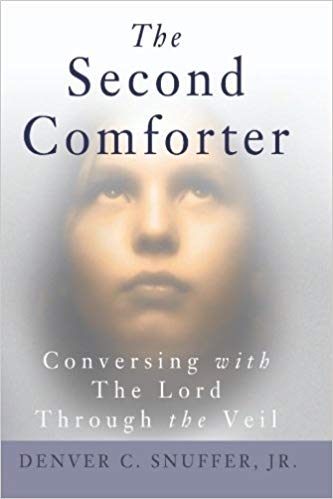 |
He went on the write several more books teaching the deeper meaning of scriptures and the need to remember scriptural doctrines which are not emphasized in the Church today. I read these books as they were published and detected nothing but full support of the current LDS Church leadership, who just appeared more focused on teaching the basics to new converts worldwide than delving into deeper doctrines.
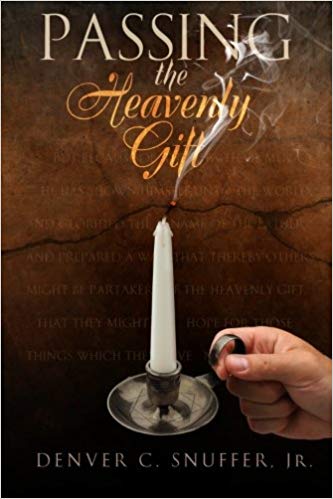 |
Now comes one interesting part for the purposes of this article. He claimed that the Lord had told him to give a series of ten lectures at specified locations from Idaho to Arizona for exactly one year (Tue 10 Sep 2013 - Tue 9 Sep 2014) with the content of each to be given to him by the Lord. It turned out that he received his excommunication letter on the day of the first lecture, which was the fortieth anniversary of his baptism.
At the final lecture, he announced that those who believed his message needed to be baptized again because a new dispensation was starting. He also said that to the extent possible, everyone should gather into "fellowships" and meet regularly in a home for the purpose of worship, of partaking of the sacrament, and the paying of tithing to be distributed to the poor in that fellowship or be saved for a temple fund if there is surplus. Previously he had taught of a need for a new temple to be built in the city of Zion, so those teachings fulfilled criteria (9-10). The lectures were augmented and published as the book Preserving the Restoration in Sep 2015.
On the morning of Sun 3 Sep 2017, his flock was offered a covenant of peace directly with the Lord, fulfilling criterion (7). About a thousand accepted, some 800 at the conference, and another 200 scattered around the earth who were streaming the event. Thus, he is also involved with gathering scattered sheep, which is criterion (8).
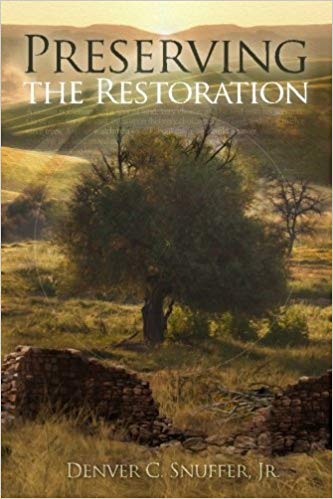 |
These sacred calendar witnesses were just discovered this month as this article was being prepared. So none of those who believe that Denver Snuffer is truly called of God is yet aware of any of these witnesses. It should also be mentioned that to my knowledge he has never claimed to be David the Servant, so this is just me putting puzzle pieces together to consider the possibility.
First, it turns out that his birthday is a major holy day on one of these four calendars. Moreover, he was born in a year which was holy on two of these calendars. First, he was born in the year DECISION DAY 2 (24 TAMMUZ, PH), which could indicate that he might have to make a big decision in his life. Second, he was born in the holy year DECISION DAY 3 (1 MID SUMMER, UE). Actually, that year is holy for two reasons, the other being that it is the first day of a MONTH. So he was born in a double DECISION DAY year!
Is there any precedent for that? Yes, as seen above in this article, Abraham was also born in a double DECISION DAY year on those same two calendars. First, he was born in the same year as this possible David the Servant: Both were born in DECISION DAY 2 (24 TAMMUZ, PH)! Second, Abraham was born on DECISION DAY 1 (17 SUMMER, UE), which is the equivalent of 17 TAMMUZ (UH) on the UE Calendar. That is extremely rare and might well be the only such cases of double DECISION DAY years on those two calendars in history. After all, each one only comes around every 364 years!
Now let us look at one key religious event in his ministry so far. The one that stands out most to me is the full year of giving lectures. It turns out that those ten lectures were begun in the holy year AUTUMN EQUINOX (SAB 0 AUTUMN, UE) and they ended in the year TRUMPETS (LORD 1 AUTUMN, UE)! Not only that, shortly after his last lecture and his announcement that a new dispensation was starting with being rebaptized, it became a holy year on two other sacred calendars, making it holy on three calendars, which is exceedingly rare! It was then also END TABERNACLES (SAB 22 TISHRI, PH) and also TABERNACLES (SAB 14 AUTUMN, E). Keep in mind that he claimed the Lord told him when to give the lecture series and that these UH and UE holy years were only discovered this month. So 2014-2015 was TRUMPETS, TABERNACLES and END TABERNACLES all at once on three different calendars! That is so rare as to probably only occur once in history because there are only 19 of each of these years in all of history.
What about the fourth calendar? On the UH Calendar, we are currently in the year FEAST OF TRUMPETS (1 TISHRI, UH)! That announces that after another 14 years will come another eight feast years in the FEAST OF TABERNACLES (15 TISHRI-22 TISHRI, UH)! The symbolism of the annual Feast of Trumpets is that it is the first day of the seventh month on which seven priests sound the trumpet. The Feast of Trumpets symbolizes the seven angels sounding the trumpet at the beginning of the Millennium:
1. And when he had opened the seventh seal, there was silence in heaven about the space of half an hour.
2. And I saw the seven angels which stood before God; and to them were given seven trumpets. — Revelation 8:1-2
Thus, this current year TRUMPETS (UH) is the one that is opening the Millennium (UH)! On the other three calendars, we are already in the Millennium.
All of these holy years appear on my Complete Religious Chronology on my website.
It was reviewed that the Lord not only counts years by sevens like days of a week, He also counts Great Years in exactly the same manner as days of a year. This means some years are holy years, even as some days are holy days. A precise correlation of Great Years on the PH, E, UH, and UE calendars was presented. In each case, choosing one year to identify on the Gregorian Calendar causes all others in history to be precisely determined.
With these four sets of Great Years known, dates of religious events proposed in earlier articles were analyzed to see which were in holy years. Many examples were reviewed from the Old and New Testaments, which were found not only to highlight key years, but also to have the particular holy year name be significant.
After reviewing many key events in the Restoration of the gospel to Joseph the Seer during the week of seven years of the FEAST OF PASSOVER from 1830-1836, it was noted that we should expect something similar about 182 years later during an 8-year FEAST OF TABERNACLES, starting about 2012. The likely leader would be the prophesied David the Servant who is to come just before the Second Coming of Christ. Ten criteria were chosen from prophecies of him and those were compared to the works of Denver C. Snuffer, Jr. Nine of the ten criteria have either been fulfilled or relate to his work. Finally, it was shown that both his birth and also key year of preaching fell into double and triple holy years, respectively.
Thus, it is seen that these holy calendars do indeed appear to be employed by the Lord to testify of His servants and of the Son of God!